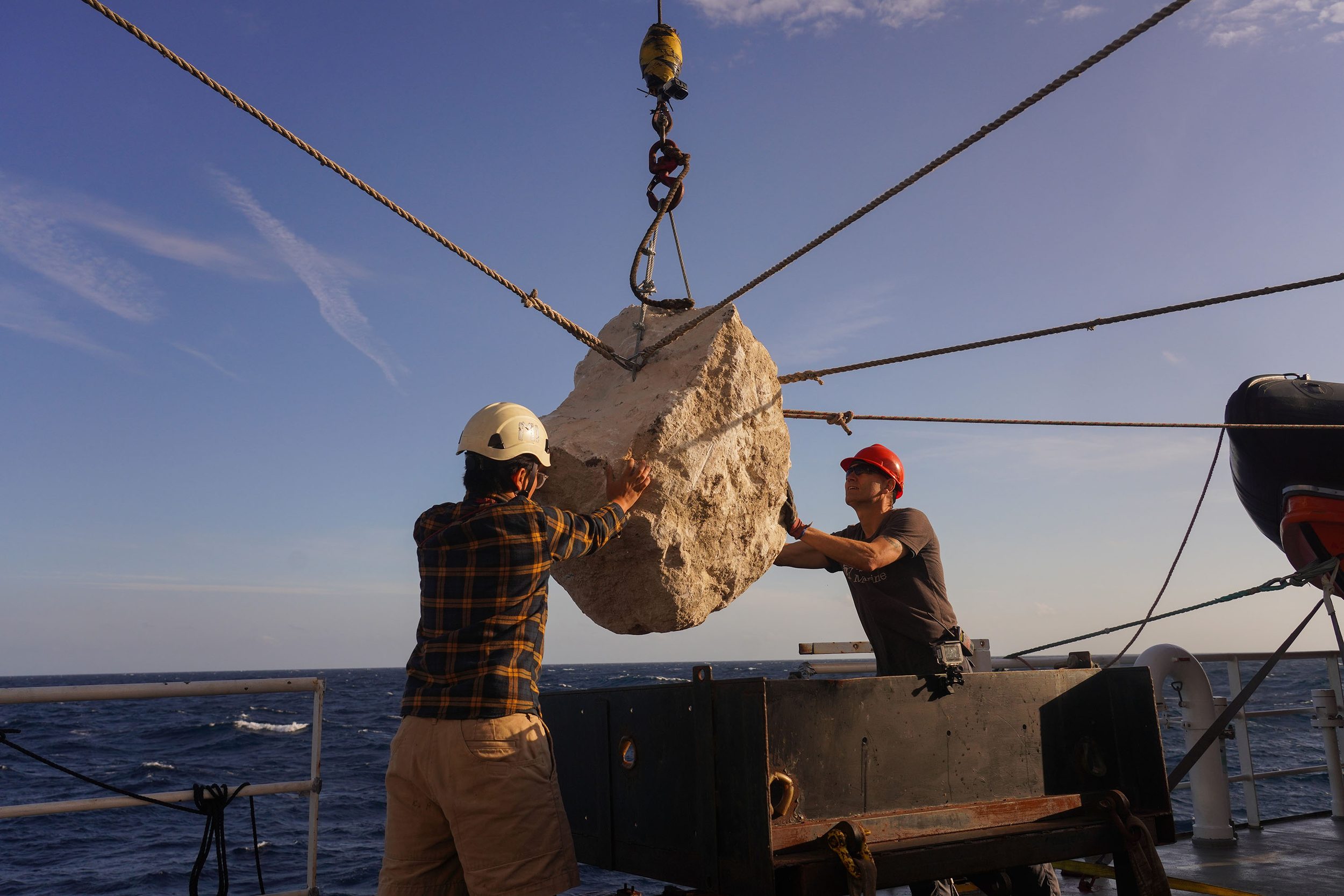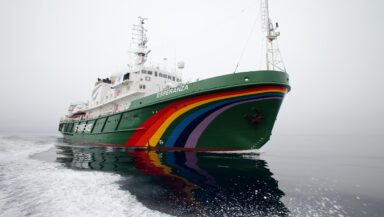What’s the first thing that comes to mind when you think of Greenpeace? For lots of people, it’s a green ship with a bright rainbow painted across the bow.
Greenpeace was founded on the ocean, when the first Greenpeace crew set out in an old fishing boat to stop a nuclear weapons test in the Aleutian Islands in 1971. Ordinary people set sail with the belief that they had a responsibility to make the world a more peaceful place for all of us.
Ships have been at the heart of Greenpeace’s campaigns ever since. From the jungle waterways of Indonesia to the wilderness of Antarctica, we are able to confront environmental destruction in places otherwise impossible to reach.
The Esperanza, one of our three ocean-going ships, has just reached the end of its working life after 20 years of service. Unless we replace it, our ability to campaign at sea will suffer.
A new, green ship
So Greenpeace is making plans for a new, green ship. The project is still at an early stage, but we know it’ll use dramatically less fossil fuel from day one. Better still, it’ll have a future-proof design that’ll allow it to go completely fossil free once the technology is available.
The new ship won’t just be cleaner, it will carry the tech needed to expose and challenge the destruction of our oceans and climate. And it’ll provide a platform for work by our allies, especially in communities worst hit by the climate and nature crisis.
There’s lots of work to do to make this plan a reality, and we won’t go ahead unless we’re sure it’ll be good value for money, and give us everything we need to keep winning campaigns.
Lots of the details are still being worked out, but here are some key facts about the new ship project:
It’ll give us unique campaigning capabilities
As well as cutting-edge green propulsion technology (see below for more on that), the new ship will be equipped for campaigning success. Our plans include a world-class onboard laboratory, and the specs and equipment needed to operate in polar regions, and in deep water.
What does this mean in practice? It will be able to take a team of scientists to those critical areas we need to protect as ocean sanctuaries like the Arctic, the Sargasso Sea, the Saya de Malha Bank in the Indian Ocean, the White Shark Café in the mid-Pacific and Blue Hole in the South Atlantic.
It will be able to follow the supertankers that carry the products of deforestation to the places driving destruction through their consumption, and accelerate the systemic changes we need in how we produce food and what we eat.
We won’t be keeping it to ourselves
The new ship will be able to accommodate more people at sea and in port, with better working and living/sleeping spaces. This will make it more accessible for people not used to life at sea and for people with various social, cultural, physical, religious backgrounds, including local communities.
We want this ship to add to the resources of the wider movement, as well as to Greenpeace campaigns. We will provide more training, support and specialist staff to make our fleet more available in more places to more parts of Greenpeace and the wider movement. We’ll start work on this while the ship is being built so that it can be used effectively from the moment it’s launched.
It’ll be powered by a mix of technologies
We have worked hard to reduce the amount of fuel being used by our ships, but there’s only so far you can go in tinkering with a traditional engine. This is why we’re looking at the better option of building a ship powered by renewables, which would be much cleaner and set a model for others to follow. The new ship will be a sailing ship at its heart, using the power of the wind to cross the ocean thanks to a modern Dynarig sail system. It’ll also use a combination of solar panels, batteries, green hydrogen, fuel cells and green methanol to maximise fossil-free operation. As these green fuels become more widely available around the world, we’ll be able to rely on them more and more, with a view to eventually operating the ship completely fossil free.
The world-changing power of Greenpeace ships
Blocking seabed destruction
Greenpeace ships built ‘boulder barriers’ to stop industrial fishing ships tearing up seabed habitats with their nets.

Protecting the Antarctic
Greenpeace ships documented unexplored parts of the Antarctic Ocean floor, providing the scientific evidence needed to create protected areas around key habitats.

Stopping Amazon oil drilling
Submarines launched from Greenpeace ships took the first ever images of the Amazon Reef where oil giant Total was planning to drill. Our work proved that Total’s plans would put the reef at risk and they eventually backed off.

A new ship is a major investment
Ships are huge, complex pieces of equipment, and the truth is that they don’t come cheap – especially when we’re using the best green technology to keep fossil fuel use to a minimum.
This will be a major investment for Greenpeace, probably in the region of €50m. But protecting Earth’s life support systems is the most important job there is, and it’s worth doing it right. We know the fishing and fossil fuel industries are ready to spend tens of millions of pounds on supertrawlers or hundreds of millions on new offshore rigs. If we want to stand up to these powerful industries, we need the right tools to get the job done.
It’ll be funded separately from Greenpeace campaigns
The money to build the ship won’t come from our campaign budget and won’t divert resources from other organisational priorities. As we haven’t started fundraising yet some costs to get the project going will come from our reserves (money we put aside to maintain and replace vital assets like our ships). In future our goal is that most of the total cost will be met by additional money raised because of the ship.
Greenpeace’s next voyage
In the 50 years since our first voyage, Greenpeace’s bold and independent approach to campaigning has changed the world in all kinds of ways. But there’s so much more to do, and the situation gets more urgent every day.
As we move into this crucial decade for the climate and the planet we need to provide our campaigners, researchers, experts and allies with tools they need to step things up. To run projects grander and more impactful than that first crew of Greenpeace campaigners could ever have imagined.
The new ship will be a vital platform for this next generation of campaigns, but of course none of it will be possible without the energy, courage and creativity of Greenpeace supporters around the world. We’re excited to embark on this new voyage with you, and we’ll keep you posted on the project as it unfolds.



